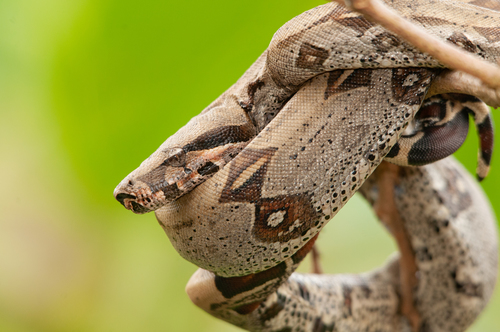
Boa constrictor
The Boa constrictor, with its striking banded pattern and muscular build, silently navigates the tropics of Central and South America. This formidable predator uses its strength to constrict prey, maintaining ecological balance by regulating rodent numbers, showcasing nature's intricate web of life.
20 years
Lifespan
Length: 3.9624 m
Size
Grey, Black
Color
2-4 years
Age of Sexual Maturity
Low
Aggression
Least Concern
Conservation Status
Decreasing
Population Trend
Characteristics
The Boa constrictor is a large, non-venomous snake found in tropical regions of Central and South America. It exhibits a distinctive pattern of brown and cream bands, aiding in camouflage. Known for its powerful constriction method of subduing prey, it plays a crucial role in controlling rodent populations.
Distribution Range of the Boa constrictor
The Boa constrictor is native to Central and South America. Its geographical distribution includes countries such as Mexico, Belize, Guatemala, Honduras, El Salvador, Nicaragua, Costa Rica, Panama, Colombia, Venezuela, Brazil, Ecuador, Peru, Bolivia, Paraguay, Trinidad and Tobago, Guyana, Suriname, and French Guiana.
Boa constrictor's Habitat
Environmental Conditions
Boa constrictors inhabit a variety of environments ranging from tropical rainforests to semi-arid deserts. They are commonly found in areas with high humidity, warm temperatures, and abundant vegetation. These snakes are adaptable and can also be found in agricultural land and near human settlements.
Ecological Niche
Boa constrictors are primarily terrestrial but are also known to climb trees and swim. They are carnivorous, feeding on a wide range of prey including birds, mammals, and occasionally reptiles. Their role in the ecosystem includes controlling the population of these prey species, and they themselves serve as prey to larger predators. The species is known for its constricting method of subduing prey.
Copyright @ Nature Style Limited. All Rights Reserved.
 English
English